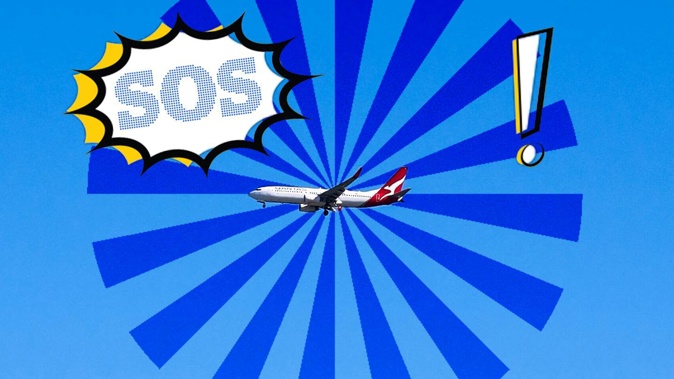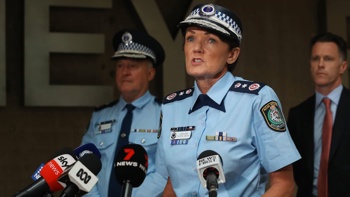
On Wednesday evening a Qantas flight made a radio call that got the world’s attention.
QF144 from Auckland to Sydney issued a “Mayday” warning to air traffic control at 4.10pm NZ time. Within minutes it was the most tracked flight on the planet.
There were over 130,000 people tuned into live flight information via the website Flight Radar used by planes potters. News sites from Australia to the UK were leading stories regarding the severe emergency call. One of the plane’s twin engines had malfunctioned.
Thankfully this mayday call was downgraded to a “Pan” (a less urgent emergency) and the Boeing 737 was able to land safely on one engine at around 3.30pm. Apparently most of the passengers didn’t even know there had been an issue.
But what does it mean? And how does it have the power to bring the aviation world to attention?
A Mayday call is extremely rare. Especially on a commercial airliner.
People only say “Mayday” in the movies. James Bond would have us believe it’s something that pilots might say as regularly as “hello”.
In reality it is reserved only for when help is needed urgently.
So why Mayday?
The word dates back to the 1920s, somewhere in the English Channel. It was suggested by air traffic control at London Croydon. Back then London to Paris was one of the busiest air links in the world and they had a problem.
- 'My wife called about 18 times': Qantas passengers describe emergency landing after mayday call
- Mayday call: Passengers recall 'large bang' on Auckland-Sydney flight
In the age of radio the universal distress signal “SOS” was too hard to make out over a broadcast. French sibilance was too hard to hear over the static.
“Help” was considered too vague. Eventually it was decided “M’aidez” was more easily heard. This was phoneticised as “May Day” to aid English radio operators.
The new distress signal was agreed upon not on 1 May but in Feb 1923, and announced to the public via the Times as the “New Air Distress Signal”.
It quickly took over from the SOS ( “Save our Souls”, or “dot dot dot - dash dash dash - dot dot dot” for readers over 80). This old distress call was adopted in 1905, originating from the Morse Code. Although there was also a competing CQD “Securite Distress” signal for wireless. In 1912, the Titanic sent both morse codes on the way to the bottom of the Atlantic. Mayday ended the confusion. It’s a word that radio operators listen out for the world over.
Even at sea on shipping Mayday has become the standard maritime distress signal.
According to the NZ CAA it is only to be made by aircraft in “serious and/or imminent danger and requiring immediate assistance.”
It is to be repeated three times followed by the plane identifier and a distress message.
If the assistance required is non-life threatening the urgency call “Pan-pan” is used, also repeated three times.
This is another phonetic adoption form the French word “panne”, meaning “breakdown”. It has since been adopted as a three letter acronym meaning “Possible Assistance Needed”.
As evidenced by flight QF144 “Mayday” is rarely used and only in the most dire of situations.
It is used sparingly and making a hoax distress call is an offence. A boat making a false distress call to Maritime NZ faces a potential $10,000 fine or even a 12-month stint in jail.
However for planes and air traffic the CAA’s advice is not to be afraid to speak up.
In CAA good practice guide pilots are advised that “getting an early call in may ensure that you are still high enough to maximise the chances of your transmission being received”.
Take your Radio, Podcasts and Music with you









